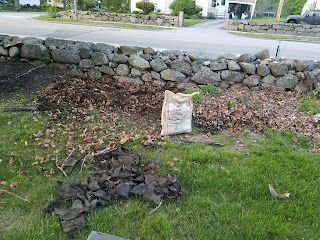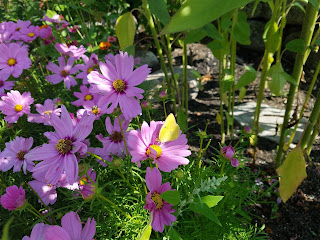Using Leaf Mulch!!!

It is 4 degrees out today and it does not feel right to write about flowers or caterpillars, so I want to share one of the successes of creating habitat for insects I had in 2018 using all of my excess maple leaves as an alternative to bark mulch. According to the National Wildlife Federation , using leaves for mulch is critical to many butterflies and other species of insets, including luna moths, great spangled fritillaries, woolly bear caterpillars (which become Isabella tiger moths) and red-banded hairstreaks. These are just examples. Insects need a place where they can escape predators, the sun and certainly the cold weather. They also forage for bacteria, fungi and detritus that exists in decomposing leaf material. So in the fall of 2017, I decided to start taking control of the yard I purchased the year before because the landscape was all barren bark mulch. Nothing really lives in the bark mulch. It is all carbon with few nutrients and no real structure to create habit


